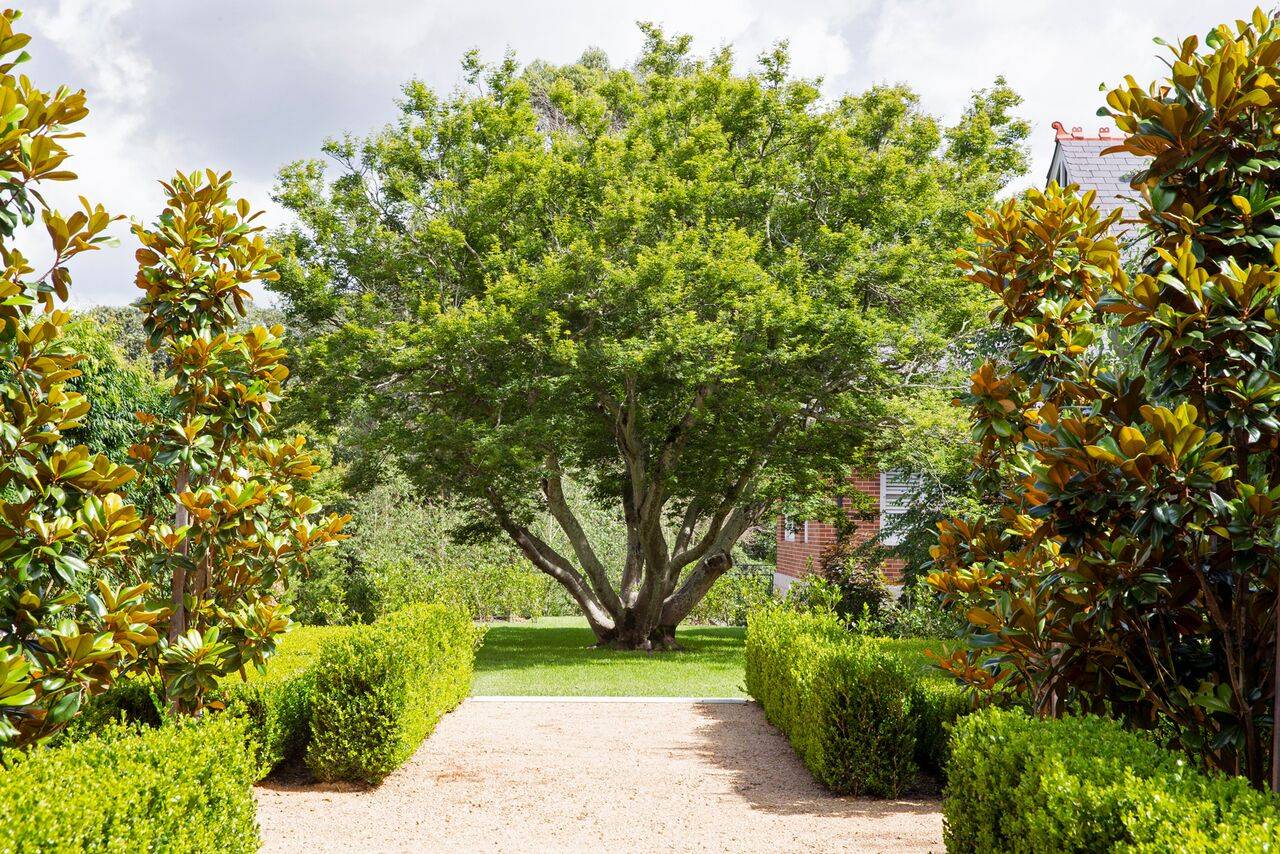Snow Pear
Pyrus nivalis, I use this tree more often than any other. I use…



Evergreen Magnolia species are one of our favourite trees and large shrubs at Peter Fudge Gardens. They are very versatile and beautiful plants adaptable to a variety of styles and conditions.
We think every garden has a spot for one. Contact us to find out where in your garden.
Here is an overview of the Evergreen Magnolia: Evergreen Magnolias have been extensively used throughout gardens around the world. Magnolia grandiflora is the original ‘Evergreen Magnolia’ also known as the ‘Bull Bay’ or as the ‘Southern Magnolia’ where it is native to south-eastern United States. These magnificent evergreen trees have been cultivated and developed to form a large range of plants, from large specimen trees such as Magnolia St Mary’s, Magnolia Exmouth, to types suited to hedging or screening such as the small growing very popular Magnolia ‘Little Gem’. New cultivars including Magnolia ‘Kay Parris’, Magnolia Greenback and Magnolia ‘Teddy Bear’ are now on the market and these have slightly different flowers, foliage colour and growing forms. These stunning plants prefer full sun to part shade, humus rich soil and a little protection from hot dry winds.
For us the Magnolia Grandiflora is a fantastic large specimen evergreen tree. This Magnolia is an excellent shade tree with a typical broad Pyramid habit. It has large glossy dark green leaves with the underside of a coppery velvety texture. During the warmer months it produces beautiful, creamy-white, fragrant flowers on mature wood.
For a stunning street tree or large garden the Magnolia Grandiflora ‘Exmouth’ is the one we choose as it shares all the attributes of Magnolia grandiflora however with a more upright habit approximately 5 -8m wide by 12 – 15m tall at maturity. This variety also flowers at an earlier age than Magnolia grandiflora.
We specify most often for residential gardens the Magnolia grandiflora ‘Little Gem’ as it is the first of the so called ‘dwarf’ magnolias, however it will still grow to 5 – 8 m wide by 6 – 10m tall. Magnolia ‘Little gem’ is also useful as a small evergreen specimen tree or screening tree that responds well to shaping.
An option to the ‘Little Gem’ is Magnolia grandiflora ‘Kay Parris’ . It has great foliage and a very long flowering season. The leaves are extremely glossy, with a deep orange on the underside. Smaller growing than ‘Little Gem’ perhaps to only 6-9 m tall, again it makes a nice specimen tree as it has good structure and holds its shape well, ‘Kay Parris’ Magnolia could also be a fantastic screen, it has a similar growth habit to ‘Little Gem’ however a little smaller and more compact.
Lately Peter has been using the Magnolia grandiflora ‘Teddy Bear’ as it is smaller growing than ‘Kay Paris’ and again fantastic foliage, but different to others in that the dark glossy green leaves with a heavily felted coppery velvet underside and rounded cup shaped leaf which is densely held on the branches. The colours are quite beautiful. Will grow 2- 3m wide by 6m high, like both ‘Little Gem’ and ‘Kay Paris’ if pruned in winter it can easily be kept more compact. Teddy Bear produces large white flowers which are almost 20cm across during the warmer months. Long flowering, dense foliage form and upright habit make it a perfect hedging alternative, specimen tree or grown in containers.
Magnolia Grandiflora 'St Mary' A smaller growing form of Magnolia Grandiflora approximately 3 – 5 m wide by 6 – 8 m tall. Large glossy apple green leaves and large white flowers in the warmer months. ‘ST MARY’ is reasonably quick growing and is a good choice for tall screening or as a specimen tree, and responds well to winter pruning if any shaping is required.
There are many other varieties that can be considered depending on the soil, climate and situation of the garden. They include the Magnolia grandiflora ‘MGTIG’ Greenback®, the Magnolia Delavayi , the Magnolia virginiana and then there is the Port Wine Magnolia which is not actually a magnolia at all, it’s a related species / cousin ‘Michelia Figo’.
